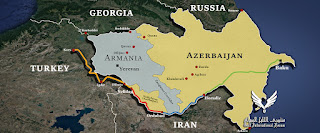The RCD was founded in 1964 by Iran, Pakistan, and Turkey to
strengthen economic, cultural, and technical cooperation. It emerged in a Cold
War environment, where smaller powers sought to shield themselves from
great-power dependency by building regional linkages.
On paper, the project had logic, three strategically located
Muslim countries, with shared aspirations of modernization, pooling resources
to advance trade, industry, and connectivity. In practice, RCD never went
beyond symbolism.
The organization lacked institutional strength, faced
political frictions, and struggled to overcome the dominance of external
economic ties over intra-regional trade.
By the
late 1970s, the Iranian Revolution and shifting geopolitical alignments sealed
RCD’s fate. In 1979, it faded into history without leaving a substantial
legacy.
A revival attempt came in 1985, when the same three
countries launched the Economic Cooperation Organization (ECO). ECO promised a
fresh start and greater ambition. Its major breakthrough came in 1992 with the
admission of seven new members — Afghanistan, Azerbaijan, Kazakhstan,
Kyrgyzstan, Tajikistan, Turkmenistan, and Uzbekistan.
ECO spanned a vast geography bridging South, Central, and
West Asia, with a market of nearly half a billion people and immense natural resources.
Observers predicted that ECO could become a Eurasian
economic powerhouse, knitting together landlocked Central Asia with energy-rich
Iran and Turkey, and consumer-rich Pakistan.
As decades passed, the promise remained unfulfilled. Member
states pursued conflicting foreign policies, were more deeply tied to external
trade partners than to each other, and often lacked political trust.
Infrastructure gaps meant goods could not move freely.
Overlapping memberships — in the OIC, SCO, CIS, and other blocs
— diluted ECO’s relevance.
High-sounding declarations at summits were rarely followed
by implementation. Even flagship projects, such as the
Islamabad-Tehran-Istanbul railway, never became viable trade corridors.
Today, ECO exists largely as a ceremonial body. Meetings are
infrequent, agreements unenforced, and the organization invisible in global or
even regional affairs.
Intra-ECO trade remains stuck around 7–8% of members’ total
trade, a telling indicator of stagnation.
Compared
to other regional blocs such as ASEAN or the EU, ECO demonstrates how political
will, not geography, determines success.
The journey from RCD to ECO to dormancy offers a lesson ‑
regional cooperation cannot survive on rhetoric alone. Without trust, shared
vision, and consistent follow-through, even the most promising initiatives
collapse into irrelevance.
ECO still retains potential — its geography places it at the
crossroads of major trade routes, including China’s Belt and Road Initiative.
But unless member states move beyond statements and invest in genuine
integration, ECO’s story will remain one of unrealized potential and
organizational decay.


















